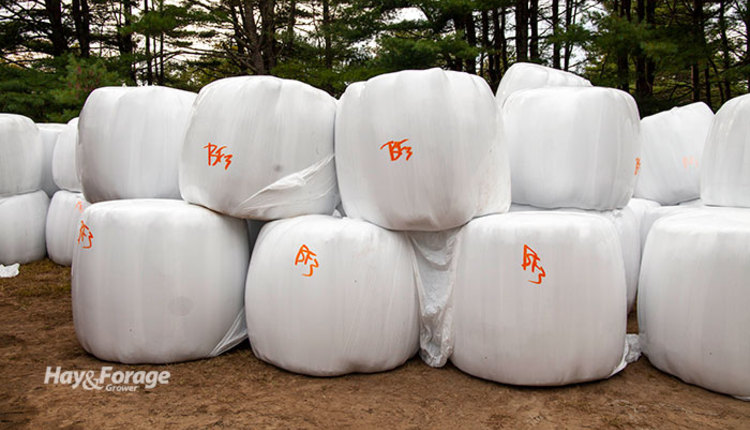High-quality baleage demands timely cutting |
| By Amber Friedrichsen, Associate Editor |
|
|
|
Baleage has the potential to be a high-quality feedstuff that can reduce the need for supplementation in livestock diets. However, this high-moisture stored forage cannot attain its most desirable attributes without proper harvest, storage, and feedout practices. Kim Mullenix, extension beef specialist with Auburn University, says baleage can be used to meet the nutritional requirements of most cow-calf operations. Before feeding baleage, it is necessary to test the forage to know if the amount of total digestible nutrients and crude protein are sufficient to meet animal needs. The best way to ensure adequate nutrients is to harvest forage at its optimal maturity. “The nutritional quality of baleage will only be as good as the starting product,” Mullenix asserts. “What goes in must come out, and putting up low-quality forage means a low-quality feed product.” Once forage is harvested, it is crucial to store it correctly to prevent spoilage and nutrient loss. Make bales at a moisture level between 40% and 60% and tightly wrap them with at least six layers of plastic. Commercial enzymes and inoculants can also be used to quickly drop the pH in bales and enhance fermentation. While these additives can help preserve dry matter and safeguard against mold during storage, Mullenix warns such products do not have the power to compensate for poor forage quality. Feeding time Baleage quality is still subject to decline after fermentation. Understanding a herd’s dry matter intake is key to allocating an appropriate amount of forage and limiting waste. “Many factors affect dry matter intake, including animal weight, stage of production, forage quality, and environmental conditions,” Mullenix says. “A good rule of thumb is that a mature cow will consume about 2.5% of her body weight per day in dry matter." Because of its high moisture content, it will take more baleage by weight to feed cattle compared to dry hay. For example, following Mullenix’s recommendations, a 1,200-pound cow would need 30 pounds of dry matter per day. This can be achieved by feeding 60 pounds of baleage at 50% moisture, whereas it would only take 35 pounds of dry hay at 15% moisture to meet this requirement. Feeding strategies can also affect baleage quality. Bales can be ground up and incorporated into a mixed ration, or they can be fed whole. In the latter case, Mullenix suggests utilizing a ring- or cone-shaped feeder, trailer, or cradle to minimize waste. Only allot enough feed for one to two days, or just one day if feeding baleage in the summer. Despite steps taken to prevent spoilage, there may still be some microbial growth during storage. Signs that harmful bacteria are present include bales that appear dark brown or black in color, are wet and slimy, or have a rancid smell. This feed will not be palatable to animals, but more importantly, it can be toxic and cause botulism. “Clinical signs of botulism include brain inflammation, disorientation, impaired nervous system function, and continuous saliva,” Mullenix states. “Contact a veterinarian immediately if these signs are observed.” White, pink, gray, and blue molds may also appear on the outer layers of baleage. Mullenix says this is common and has not been shown to negatively affect animal health. Even so, it is best to avoid feeding bales with excessive amounts of mold.  Amber Friedrichsen Amber Friedrichsen served as the 2021 Hay & Forage Grower editorial intern. She currently attends Iowa State University where she is majoring in agriculture and life sciences education-communications and agronomy. Friedrichsen grew up on her family’s diversified crop and livestock farm near Clinton, Iowa. |

